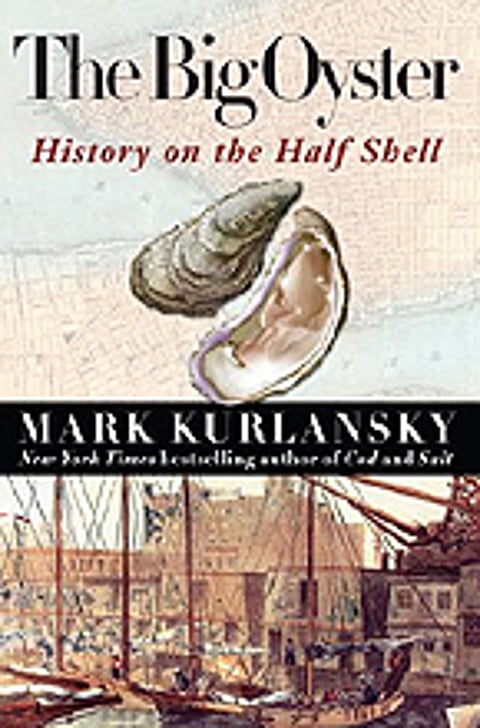
- Destinations
- Experiences
- Stay
- What's new
- Editor’s Picks
- Responsible Tourism
- CampaignsCampaigns
- Subscribe

If you have a sense of curiosity and a palate, you can't have read Mark Kurlansky's Cod and Salt, or his anthology of food writing, Choice Cuts, without joining his brigade of fans. Kurlansky is the best kind of foodie &mdash passionate about food history, cooking ingredients, chefs and cooks, and prodigiously well-informed in many areas. This book has an ominously long two-colon subtitle, though The Big Oyster New York in The World A Molluscular History. Kurlansky's trying to do either too much or too little here, by providing a glimpse of New York's early history through the city's fascination with oysters, which only died when polluted waters killed off the oyster beds.
Oyster neophytes complain that the molluscs have the taste and texture of cold snot. Gourmets share Kurlansky's perspective &ldquoIt is hard to explain to those who don't do it by what strange impulse humans take these primitive creatures with their tiny hearts pounding and slide them down their throats. The best explanation is that a fresh oyster from a clean sea fills the palate with the taste of all the excitement and beauty &mdash the essence &mdash of the ocean.&rdquo
In 1609, New York's oysters were already famous to explorers like Henry Hudson, who traded tools for oysters with the Lenape Indians. A few decades later, the Dutch reported 12-inch oysters, and some of their still lifes of the molluscs show a corresponding increase in size. An American cookbook published in 1796 took the cheapness of oysters for granted &mdash one recipe calls for chicken to be stuffed with oysters and then smothered with a &ldquopint of stewed oysters&rdquo &mdash a prodigal dish in today's terms.
In a later age, Thackeray took issue with the incredible size of the average New York oyster &mdash it was, he said, like eating a baby. Dickens was fascinated by the city's oyster saloons, oyster bars and oyster cellars, which ranged from the very sophisticated to the desperately seedy. But by the 1900s, New York had grown beyond all reckoning, and it had the same relationship with its estuary that Delhi does with its river &mdash these waterbodies were either ignored, or treated as dumping grounds. The increased pollution effectively killed off New York's oysters, and the trade has never quite recovered.
Kurlansky hits every mark, with recipes from old cookbooks alternating with descriptions of oyster cellars. But unlike Salt, where every page was marked by Kurlansky's passionate involvement with the subject, The Big Oyster is diligent and painstaking, but rarely more than that. For the New York historian, or the shellfish enthusiast, this will remain a useful curiosity. For the rest of us, it's like tinned oysters &mdash however smoothly the book slides down your throat, this is flabby, insipid Kurlansky on the half-shell.
